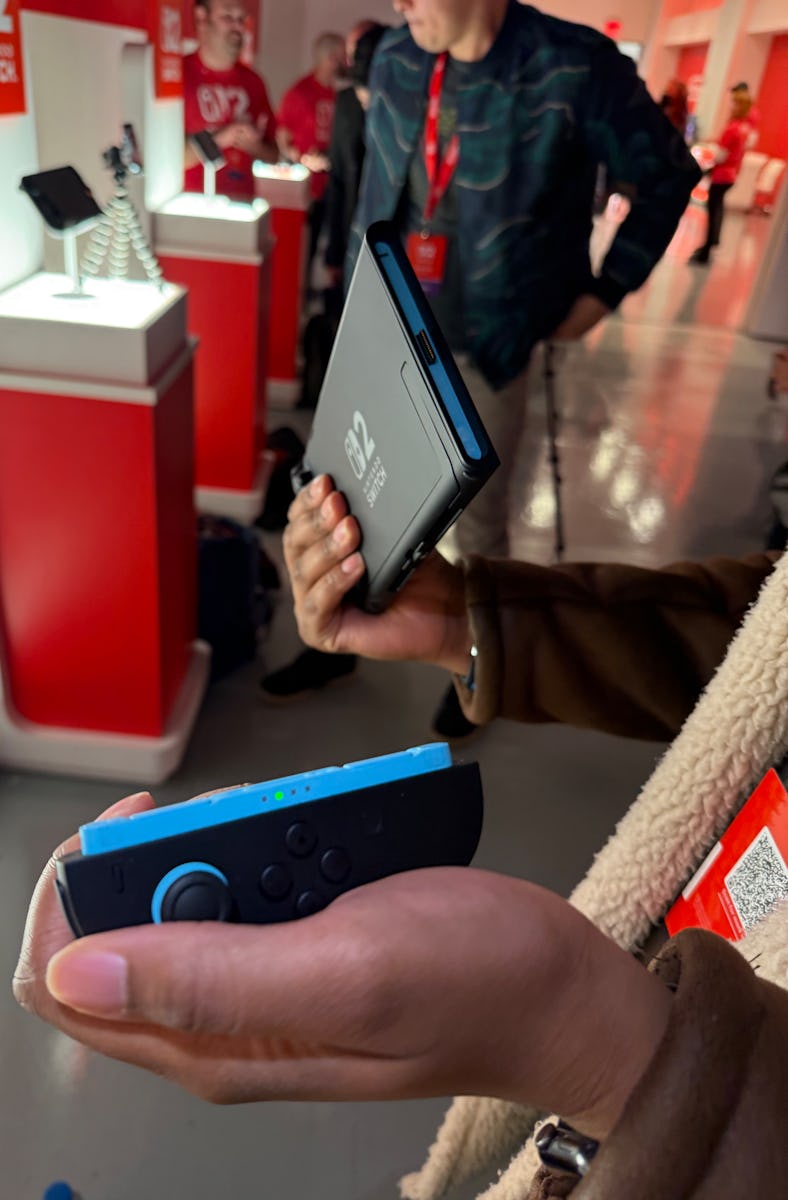The Switch 2's Mouse Controls Are Nintendo's Best Innovation Since The Wii
Familiar in a big way.

We’ve known that something was up with the Switch 2’s Joy-Cons for a long time now. But even after Nintendo basically confirmed that the Switch 2 would incorporate mouse functionality right into its diminutive controllers, I erred on the side of skepticism. Could the Switch actually replicate one of the most universal ways people play games into their console in such a novel way?
After some hands-on time with the Switch 2 playing multiple games, I’m happy to report that the answer is a resounding yes. Not only does it work as well as one might hope, they’ve gone some fun new ways to capitalize on the input in ways PC games just haven’t yet.
The first (and most impressive) implementation I tried was for Metroid Prime 4: Beyond, the long-awaited return of Nintendo’s mainline sci-fi series. To my surprise, the demo and Joy-Con were set up with mouse controls being the default. After a few adjustments to the standing desk set up in front of the screen, I loaded into a chaotic battle between an alien threat and Galactic Federation forces.
To my surprise, Metroid Prime’s unorthodox shooter mechanics felt surprisingly natural. With the left Joy-Con, players control Samus with the left analogue stick, with the option of dashing left or right with a double push either left or right. With the right Joy-Con, players can look around freely. With the pull of the R-button on the left Joy-Con, players can lock on to an enemy, allowing them finer control over where on the enemy’s body they’d like to shoot. It doesn’t make the game a cakewalk, however: locking on only guarantees Samus will shoot in an enemy's general direction. They can still miss shots if they’re not carefully considering where the reticule is.
The demo’s final boss was an excellent demonstration of the game’s controls. Defeating the towering alien beast required free aiming to shoot down the glowing projectiles it would toss at you. When vulnerable, locking on and subtly guiding the reticule to particular spots on its body was the only way to damage it. All the while, players had to dodge, roll, and jump over attacks to avoid certain demise. Combat had a rhythm that felt extremely natural. The best part of all was at any point, players could seamlessly switch to a more traditional dual analog stick control scheme by picking up the controller. No need to enter a menu or reload. It’s a pretty neat bit of tech, especially for those who will be testing the limits of the new input method once the console launches.
The other first-party game Nintendo made available was Drag X Drive, the wheelchair basketball game that uses the sensor in both Joy-Con controllers simultaneously. To get players acquainted with the controls, the demo starts in an odd tutorial that resembles a race track. The tight corridors you’re in don’t do a great job of making you feel adept at using the virtual wheelchair. The sudden stops and power drifts often send you careening into the blocked-off walls.
Drag X Drive featured the most creative use of the new Joy-Cons.
Once you’re on the wide open spaces of a basketball court, things begin to feel a lot more natural. The mice can detect hard pulls of each wheel individually, allowing players to do quick spins, hard stops, and big strides forward and backward. Making your way down to the opposite side of the court backwards, waving for a pass after a teammate's rebound, feels amazing.
It also helps that the game offers the same brand of universal fun that Wii Sports offered some 19 years ago. My colleagues and I got competitive quickly, guarding players to prevent passes, and coordinating strategic plays. It was the closest thing to playing real basketball I’ve ever experienced via a video game console, with the bonus of a Rocket League-style presentation.
The last of the three games we tested was Civilization VII. Its implementation worked as expected. While the lack of novelty was technically less impressive than the other two games we played, it did showcase how easily similarly complex games on PC could be ported to Switch. Fireaxis Executive Producer Dennis Shirk tells Inverse the team sees it as “such an easy win” for their dedicated player base.
Civilization VII worked as expected on Switch 2, the perfect test case for porting PC classics to Nintendo’s new hardware.
“The bulk of our fans play on Steam but also take the game with them in some form, usually on Switch,” he says. “Not everybody did, because not everybody's on the fence about console controls and how they work with strategy games. The new mapping, with all the focus testing we've been doing, just feels really, really good.”
Civilization VII already had me hoping we’d see comparable versions of PC-only real-time strategy games like Starcraft II and Homeworld 3 make their way to the handheld if developers can find a suitable way to translate them.
One of the few drawbacks was the size of the Joy-Con. Players with larger hands will be less comfortable holding the new Joy-Cons on their side despite the larger footprint. However, I imagine third-party manufacturers and maybe even Nintendo will release an accessory to give the controllers more surface area to grab onto.
There was plenty of reason to be unsure of the Nintendo Switch 2’s newest feature. But after a substantial amount of time putting it through its paces, I believe it’s Nintendo’s most applicable and interesting gimmick in almost 20 years.
The Nintendo Switch 2 releases June 5.
Shannon Liao contributed reporting.